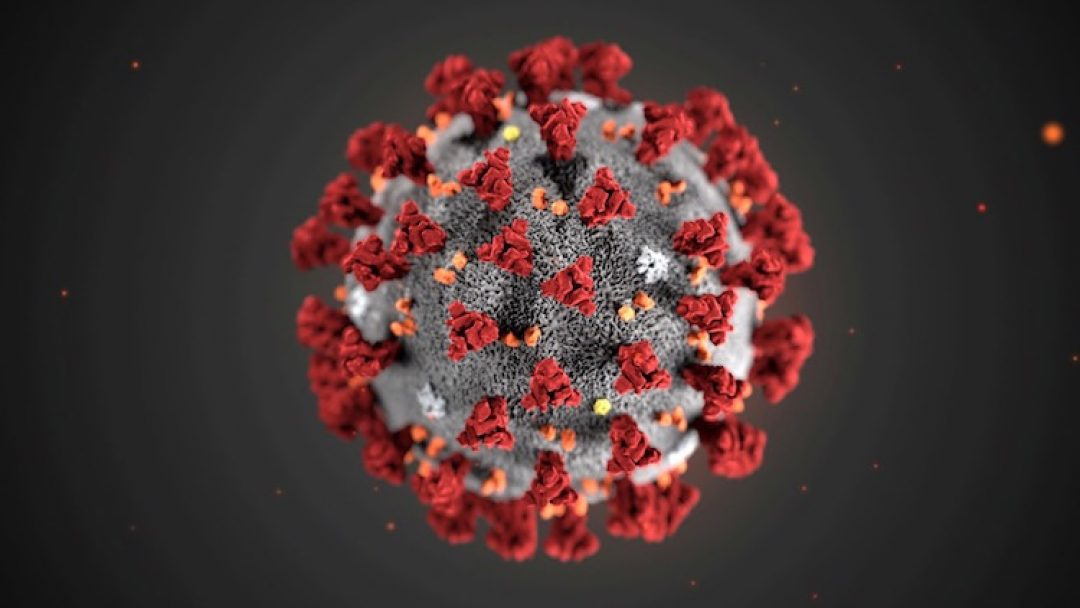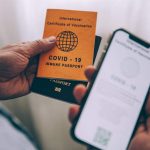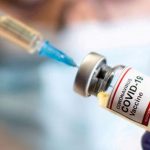While the COVID-19 pandemic in Arizona could end by summer, the novel coronavirus is likely here to stay.
The future of COVID-19 depends on the continued vaccination effort and how successful the world, nation and state are at immunizing masses of people before the virus continues to evolve into more infectious versions.
COVID-19 vaccines are highly effective in preventing serious illness and death, but they are not 100% in terms of preventing infection from the new coronavirus. Also, the SARS-CoV-2 virus that causes COVID-19 could continue to mutate and necessitate new versions of the vaccine on a regular basis, similar to the influenza vaccine.
Some vaccines, such as for measles, are effective for decades. Others wear off or need to be adjusted annually for mutations. The COVID-19 vaccine’s timeline is still being studied.
Hospital leaders also say they expect to see patients with lingering health problems from COVID-19 in months and years ahead.
“I think we will continue to see COVID. … We know even when people take flu shots, we still see flu. So I anticipate we’re still going to see some of this,” said Linda Hunt, CEO of Dignity Health in Arizona.
“I think we’re going to see more intensive-care-type patients because, unfortunately, some of the side effects of COVID-19 don’t go away. We’re continuing to see people who have gotten over COVID but still have health issues.”
The virus has taken more than 16,600 lives in Arizona, more than a half million nationwide, and more than two and a half million lives worldwide, but left many more with problems ranging from heart damage to severe migraine headaches.
“I don’t believe that the coronavirus is going to disappear from the earth. It’s likely going to be here with us, hopefully circulating at very low levels, for a long, long time to come,” said Dr. Marjorie Bessel, chief clinical officer for Banner Health, which is Arizona’s largest health care delivery system.
The more the virus is allowed to circulate, the more likely it is going to have time to mutate and become something different, including a variant that may not be adequately covered by the vaccine, Bessel said.
But if most of the population is vaccinated quickly, life this year could return to normal, or at least much closer to normal.
“We need to wear our masks now so that we can try to drive the virus load in our communities down,” Bessel said. “Much of this is up to us, of how it will play out. If we can continue to wear masks appropriately and go and get vaccinated when it’s our turn, that will help determine sort of our destiny here.”
The public health emergency in Arizona and the U.S. will likely end by August, but COVID-19 could remain in circulation in other parts of the world, echoed Will Humble, executive director of the Arizona Public Health Association and a former state health director.
“South America and Central America and Africa, parts of Southeast and South Asia, the Middle East, Iran — a lot of those countries aren’t going to have anywhere near the amount of vaccine that they’ll need to get to herd immunity,” he said.
“The virus is going to keep mutating through all those infections. That to me is the risk. You get another couple of billion people to be infected over the next couple of years, that gives the virus that many opportunities to mutate and change its protein coding and start to maybe escape antibodies. If that happens, maybe we’ll need annual shots.”
Some countries are doing better than others with vaccine efforts and there are fears that it could take months or even years to make the vaccine available to everyone in the world. The U.S. would remain vulnerable if the rest of the world doesn’t make progress in getting people vaccinated.
At the current rate, it will take several more months to get 75% of Americans vaccinated, according to Bloomberg. But at the global pace, that could take years.
Israel is vaccinating at the fastest rate, with about 49% of the population fully vaccinated. The U.S. ranks sixth, with 12% of the population fully vaccinated so far, per Bloomberg as of Thursday.
But other countries are far behind. Canada and Brazil have fully vaccinated less than 2% of their populations; India is at 0.5%; South Africa is at 0.3%, the Bloomberg data shows.
“This is a global pandemic and we are still vulnerable here in the United States, the state of Arizona, and the Phoenix metropolitan area, and our other communities, based on what is happening in the world,” Bessel said. “We need all areas of the world to improve because essentially we are all interconnected.”
COVAX, a global initiative aimed at equitable access to the COVID-19 vaccine, has a critical role in getting vaccine to countries that otherwise would not be able to access enough supply, and it’s important for wealthy countries to participate, Humble said.
The initiative is being led by UNICEF and President Joe Biden has pledged $4 billion to its cause.
Dr. Joshua LaBaer, director of Arizona State University’s Biodesign Institute, is optimistic that the COVID-19 vaccine effort in the U.S. will prevent the worst aspects of COVID-19: the severe disease, hospitalizations, ICU care and deaths.
LaBaer is “hopeful” that by the end of July, when most everyone who needs a vaccine here will have been able to get one, “we can get back to some degree of normal life and start interacting again.”
In Arizona, health officials believe 70% or more of the population will need to be vaccinated in order to achieve herd immunity, which occurs when enough people are resistant to the virus to ward off future pandemics.
“If we can get to the herd immunity point — which I believe we can get to if we can convince somewhere between 70 and 80% of the population to take vaccine — then we will reduce the ability of the virus to spread exponentially in our population,” LaBaer said.
But reaching herd immunity doesn’t mean the disease goes away, he said.
“We already have herd immunity for measles, right, but we still have outbreaks of measles. It still will crop up, but we’re not seeing an epidemic response to measles because we have herd immunity,” he said.
“I think at that point, if we could get to 70 to 80%, that kind of herd immunity, I would certainly feel more comfortable about opening things up. And of course our goal really should be to get everybody vaccinated, because if we can do that, we could really very significantly limit severe outcomes from this illness.”
If COVID-19 is reduced to the point where it’s largely just an upper respiratory infection that may keep people home from work in some cases but won’t cause severe illness, it can be managed, LaBaer said.
He doesn’t expect people will need the COVID-19 vaccine as often as the flu vaccine, which is offered each year. The flu is much better at changing its form, requiring new vaccines, he said, whereas COVID-19 vaccines are more effective to begin with and immunity appears to be longer-lasting.
“We have a good shot at having lasting immunity,” LaBaer said. “It may be possible that we’ll need booster vaccines periodically, but I think we could get to a point where it’s not spreading wildly in the community anymore and where people are not ending up in the hospital because of this, especially if we can convince folks to get vaccinated.”
As more people get vaccinated, the need for masks may also dissipate. But several health experts note that one lesson learned from the COVID-19 pandemic is that masks and social distancing, combined with a push for flu shots, appear to be effective at keeping the flu away. Cases of influenza in Arizona and across the U.S. were extremely low this flu season.
“We have driven a knife through influenza and we know how to do it,” Humble said. “Look at what happened in the Southern Hemisphere and here. It’s gone. It’s non-existent this year.”
Humble predicts more people will continue to wear masks in certain public settings, particularly now that masks are so widely available.
“I think a lot of people are going to wear masks on planes and other places and there won’t be a stigma,” he said.
Similarly, LaBaer does not think mask-wearing will go away, though it will be greatly reduced, he predicted.
“There will always be some people who are concerned, particularly people who have a high risk of negative outcome or certainly if people do get sick, it would be a reasonable thing to wear a mask,” he said.
“I’m hoping that our culture is now becoming more accepting of masks. There are other countries, particularly in the East, where mask wearing was common well before COVID-19, when people were ill, and I think it’s a courtesy that you do to your neighbors and friends by wearing a mask when you’re ill so that you don’t spread any kind of infection to them.”
The Centers for Disease Control and Prevention has said that people who are fully vaccinated may interact with others who have been vaccinated, and opportunities for safely socializing will only improve, the experts said.
So-called “social distancing,” also called, “physical distancing,” is unlikely to have a lot of staying power.
“Socializing is good for mental health. People should go back to that. That’s what makes humans happy — interconnectedness, socializing, friend groups. That’s one of the things that makes life so interesting. So I don’t think there will be any long-term social distancing,” Humble said.
Health leaders say it’s important to keep up with safe pandemic practices a little bit longer until more people are vaccinated.
Hospitals aren’t back to business as usual yet. Doctors and nurses are coping with burnout, and a swell of patients who delayed care, including surgeries and cancer screenings, are needing their procedures now.
“Not everything is going to go back to normal in a single day. It’s going to happen in phases over the ensuing weeks and months. … I think life is going to be really good a year from now,” Bessel said.
“However, I don’t ever think we will forget what we’ve been through and, of course, we will never forget those who lost their lives and family and friends who lost their loved ones and those who may still have long-term or lingering effects of being sick with the virus who survived. I don’t want to minimize that.”








